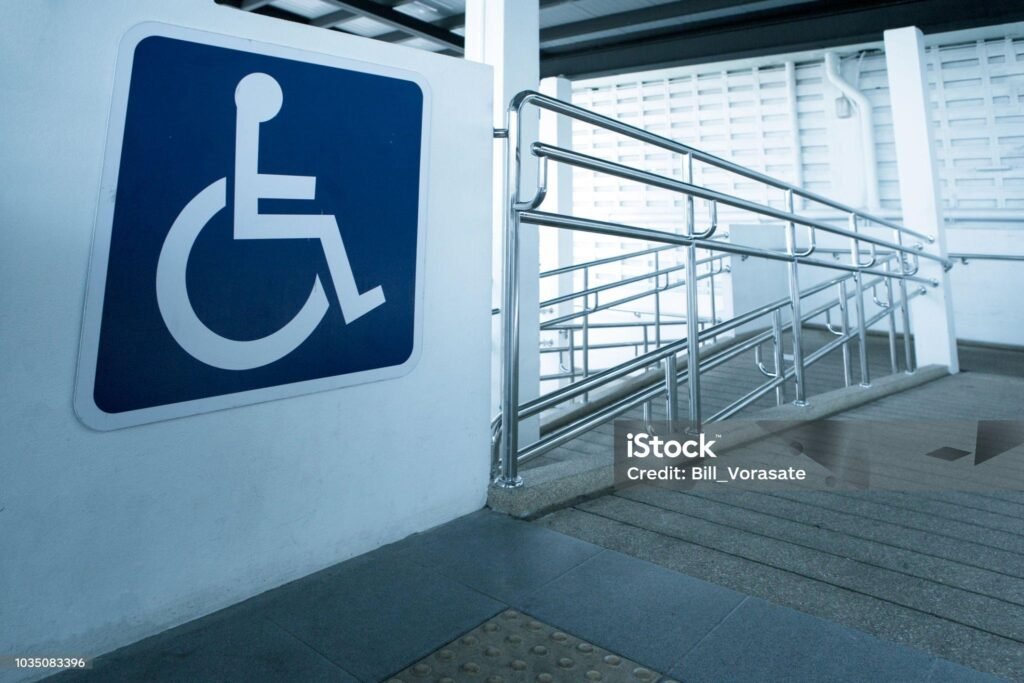Introduction
Wheelchair ramps are essential tools for individuals with mobility impairments, providing safe and accessible means of transferring between different environments. In the UK, these ramps are crucial for ensuring independence and equal access to various facilities, including homes, workplaces, and public spaces. This comprehensive guide will delve into the types, regulations, installation, and maintenance of wheelchair ramps in the UK.
Wheelchair Ramps
Wheelchair ramps are inclined surfaces that allow wheelchair users to access areas that would otherwise be inaccessible. They come in various types, each suited to different situations:
Types of Wheelchair Ramps
- Fixed Ramps: These are permanently installed ramps, often made of concrete or metal. They are commonly found in public buildings, schools, and healthcare facilities.
- Portable Ramps: Portable ramps are lightweight and can be easily moved and stored. They are ideal for temporary access needs, such as at home or during events.
- Modular Ramps: These ramps are composed of individual sections that can be combined to create ramps of various lengths. They offer flexibility and are suitable for both permanent and temporary installations.
Ramp Regulations in the UK
The Equality Act 2010 requires businesses and public bodies in the UK to make reasonable adjustments to their premises to ensure equal access for disabled people. This includes providing wheelchair ramps where necessary. The Building Regulations 2010 also set standards for the design and construction of ramps.
Key Regulations for Wheelchair Ramps:
- Slope: The maximum slope for a wheelchair ramp should be 1 in 12 (8.33%).
- Width: The minimum width of a wheelchair ramp should be 900mm (35.4 inches).
- Handrails: Handrails should be provided on both sides of the ramp.
- Landing Areas: Landing areas should be provided at the top and bottom of ramps to allow for rest and maneuvering.
Installation and Maintenance
- Professional Installation: For fixed ramps, it is advisable to consult with a professional installer to ensure compliance with regulations and safety standards.
- DIY Installation: Portable and modular ramps can often be installed by individuals, but it is important to follow the manufacturer’s instructions carefully.
- Regular Maintenance: Ramps should be inspected regularly for wear and tear, and any damage should be repaired promptly.
Installation and Maintenance
- Professional Installation: For electric ramps or ramps that require modifications to the vehicle, professional installation is recomm.
- DIY Installation: Some fold-up ramps can be installed by individuals, but it is important to follow the manufacturer’s instructions carefully.
- Regular Maintenance: Inspect ramps regularly for wear and tear, and replace any damaged parts.
Additional Considerations
- Accessibility Standards: In the UK, there are specific accessibility standards that apply to wheelchair ramps ramps. These standards ensure that these facilities are safe, usable, and accessible to all individuals.
- Funding and Grants: Various organizations and government agencies in the UK offer funding and grants to help individuals with disabilities acquire wheelchair ramps.
- Accessibility Consultants: Accessibility consultants can provide expert advice on selecting and installing ramps that meet the specific needs of individuals with disabilities.
By understanding the different types of wheelchair ramps, the relevant regulations, and the factors to consider when selecting and installing these facilities, individuals and organizations can ensure safe and accessible environments for wheelchair users in the UK.
Additional Considerations for Wheelchair Ramps
Ramp Length and Grade
The length and grade of a ramp are crucial factors to consider. A longer ramp with a gentler slope is generally easier to use. However, available space may limit the length of a ramp. It is important to find a balance between length and grade to ensure accessibility.
Ramp Materials
Ramps can be of various materials, including concrete, metal, wood, and plastic. Each material has its own advantages and disadvantages. For example, concrete ramps are durable but can be heavy and difficult to move. Portable ramps are often made of lightweight materials like aluminum or plastic.
Ramp Width
The width of a ramp should be sufficient to accommodate a wheelchair and allow for safe passage. The minimum width recommended by the Equality Act 2010 is 900mm (35.4 inches). However, wider ramps may be necessary in some situations, such as for larger wheelchairs or increased traffic flow.
Ramp Handrails
Handrails are essential for providing support and stability to wheelchair users. They should be installed on both sides of the ramp and be at a height that is comfortable for the user.
Ramp Landing Areas
Landing areas should be provided at the top and bottom of ramps to allow for rest and maneuvering. These areas should be at least as wide as the ramp and have a level surface.
Ramp Lighting
Adequate lighting is essential for ensuring safety on ramps, especially at night or in low-light conditions. Consider installing lighting fixtures on or near the ramp to provide sufficient illumination.
Ramp Drainage
Ramps should allow for proper drainage to prevent water pooling and potential hazards. This is through the use of drainage channels or slopes that direct water away from the ramp.
Ramp Maintenance
Regular maintenance is essential to ensure the safety and functionality of ramps. Inspect ramps regularly for signs of wear and tear, such as cracks, corrosion, or loose fasteners. Any damage should be repair promptly.
Ramp Accessibility for Other Disabilities
In addition to wheelchair users, ramps can also benefit individuals with other disabilities, such as those who use crutches, walkers, or canes. When designing or selecting ramps, consider the needs of a diverse range of individuals.
By carefully considering these additional factors, you can ensure that the wheelchair ramps, you choose or install are safe, accessible, and meet the specific needs of individuals with mobility impairments.



More Stories
Ace Your Theory and Practical Driving Tests
What Makes Driving Courses Effective?
Custom Printed Bakery Boxes For Your Brand